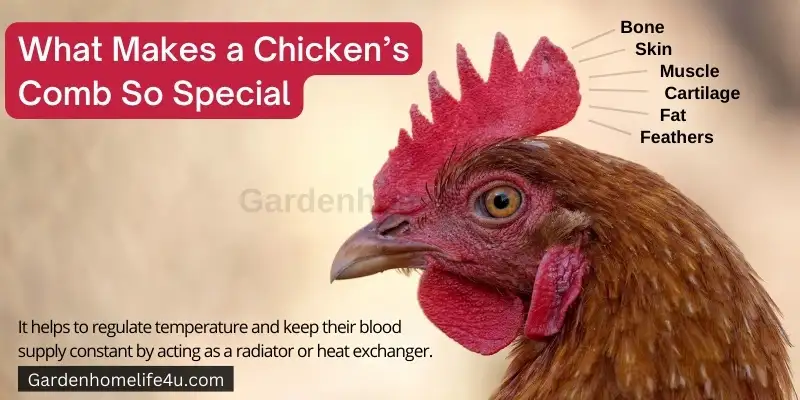Chickens come in a remarkable variety of birds, each with its own unique characteristics and traits. In this guide, we shall explore the world of poultry and uncover intriguing facts that make certain chicken breeds stand out from the flock. From exotic feather patterns and distinctive personalities to rare heritage breeds and remarkable egg-laying abilities, we will explore the fascinating quirks that make these cluckers truly special. Whether you’re a chicken enthusiast, a curious observer, or simply interested in learning more about these delightful birds, this guide will introduce you to a wealth of engaging facts that showcase the diverse and captivating nature of different chicken breeds. You shall be amazed by their quirks, charmed by their individuality, and inspired to appreciate the remarkable world of poultry.
Chickens are one of the most popular pets – why? 
Chickens are one of the most popular pets for small farmers and homesteaders, and there are many reasons why. They’re beautiful, low-maintenance, produce eggs, and have personalities as varied as their owners. But which breed is right for you?
It’s important to remember that chicken breeds can vary widely in size. Some breeds grow to be quite large while others stay small enough to fit into a small backyard coop. A few good generalizations about chicken breeds include:
- Chickens are easy and low-maintenance pets! They don’t require a lot of space or expensive equipment.
- Just some food scraps in their trough every day or two along with fresh water every day (always).
- They are pretty much self-sufficient and don’t require a lot of care.
- They are pretty smart animals and some of them could surprise you with their intelligence and problem-solving techniques.
- They are all different and have their individual personalities.
- Chicken Lay Eggs – Added Bonus – Great source of protein and Vitamins
As for the chicken meet – there are benefits :
- Chicken is an excellent source of protein, which is essential for building and repairing tissues in the body.
- Chicken is rich in B vitamins, including niacin, vitamin B6, and vitamin B12, which support energy metabolism and brain function.
- Chicken breast is low in fat and calories, making it a great option for those looking to maintain a healthy weight.
- Chicken is a good source of iron, which is important for carrying oxygen in the blood.
- Chicken is versatile and easy to prepare, making it a convenient option for busy individuals.
Chicken Domestication Origins from ancient times
China is the birthplace of chickens, and archaeologists believe that domestication occurred around 5000 BC. The first chicken may have been hatched from a wild red jungle fowl in what is now Southeast Asia. However, there’s no way to know for sure how they were domesticated. One thing we do know: they are very smart and sensitive animals!
A chicken’s comb is made up of bone, skin, muscle, cartilage, fat, and feathers 
You might be wondering what makes a chicken’s comb so special. It’s actually made up of bone, skin, muscle, cartilage, fat, and feathers. The comb is an important part of a chicken’s body. It helps to regulate temperature and keep their blood supply constant by acting as a radiator or heat exchanger.
Chickens also use their combs for communication with other chickens in their flock.
- The average lifespan of a chicken is 5 to 7 years.
- They start laying eggs in the first year and continue to do so for the next 2 to 3 years.
- They have a proper ranking system which works how they behave and feed time hierarchy.
- One Rooster is enough for one colony of chickens, that is if you can keep one at all.
- Roosters can be very noisy and most times local regulations will not allow you to have one.
- Roosters can be very territorial and will not be as friendly all the time.
When you consider all the facts about chickens and their average lifespan, it’s easy to see why they’re a popular choice for raising at home.
Egg Production and Household – Best Breeds 
If you want to raise chickens for eggs, you know that not all breeds are created equal. As a general rule, egg production is directly influenced by how much they eat and how often they lay eggs. This makes sense—a chicken that eats more food will need more energy to grow, which will result in bigger eggs. Laying frequency is also important because if your hens are laying eggs throughout the year then you’re getting fresh eggs all year round!
Here are some of the top egg-laying breeds:
Leghorn – These friendly birds have been kept as pets since ancient times due to their docile nature and willingness to sit on people’s shoulders (a practice called “perching”). They have white feathers with black spots around their heads, making them look like chicks from outer space! Leghorns produce large white oval-shaped eggs every three days or so.
Rhode Island Red – Known for being one of America’s most popular home chicken breeds since the early 20th century, Rhode Island Reds produce brown speckled colored eggs about twice per week throughout the year; however, these tend not to be as large as others similar breeds such as Barred Plymouth Rock or Wyandottes but still make excellent table fare nonetheless!
Barred Plymouth Rock – These chickens have black and white striped feathers with a reddish-brown tint to their skin, making them look like they came straight out of an old Western movie! They produce brown speckled eggs every day throughout most months; however, these tend not to be as large as other similar breeds such as Leghorns but still make excellent table fare nonetheless!
Cornish – These chickens have white feathers with black spots around their heads, making them look like chicks from outer space! They produce large white oval-shaped eggs every three days or so. Orpingtons – Known for being one of America’s most popular home chicken breeds since the early 20th century, Rhode Island Reds produce brown speckled colored eggs about twice per week throughout the year; however, these tend not to be as large as other similar breeds such as Barred Plymouth Rock or
Wyandottes but still make excellent table fare nonetheless! Delawares – These chickens have white feathers with black spots around their heads, making them look like chicks from outer space! They produce large white oval-shaped eggs every three days or so. Plymouth Rock – Known for being one of America’s most popular home chicken breeds since the early 20th century, Rhode Island Reds produce brown speckled colored eggs about twice per week throughout the year; however, these
Plymouth Rock – Known for being one of America’s most popular home chicken breeds since the early 20th century, Rhode Island Reds produce brown speckled colored eggs about twice per week throughout the year; however, these tend not to be as large as other similar breeds such as Barred Plymouth Rock or Wyandottes but still make excellent table fare nonetheless!
2. Meat – Best Breeds
- Meat chickens are the most popular breed of chicken.
- These chickens are bred to be fast-growing and large.
- They grow quickly, but they’re not bred to be healthy or disease resistant.
- These chickens are lean and muscular animals with large breasts that produce a lot of meat for their bodies (and thus also have a short lifespan).
Roosters from this breed are generally very aggressive and territorial. They may also be less friendly towards humans than other breeds of chicken due to their size.
If you’re looking to raise chickens for meat, then it’s worth considering what kind of temperament you would like from your birds. In some cases, “meat chickens” can be better behaved than other breeds because they’re less likely to be aggressive with people or each other.
3. Ornamental Fowl – Best Breeds 
Ornamental fowl are bred for their unique appearance, rather than to produce eggs or meat. Some examples of ornamental breeds include the
Silkie
Polish
Bantam
While these breeds are not the best choice for beginners, they can make wonderful pets.
These breeds should not be kept around children. The American Chicken Association recommends keeping these fowl in a separate pen to keep the other chickens safe. They are not recommended for beginners because they take more care than other breeds.
Temperament – Best Breeds
Temperament is an important factor to consider when choosing a breed. You want to make sure that your chicken is friendly and docile, as well as likes being handled by children and adults alike. Chickens are social animals, so you want to make sure they get along with other animals in the flock. It’s also important to note that not all breeds are created equal when it comes to temperament—some might be more aggressive than others.
The best breeds for temperament include:
- Wyandotte
- Rhode Island Red (RIR)
- Orpington
- Australorp
If you’re looking for a chicken that will be friendly and docile, these four breeds are great choices!
What are your goals for raising poultry?
- While chickens are an ideal choice for homeowners who want to grow their own food,
- they can be easy to care for and are good for the environment.
- And they’re also great for your soul, good at boosting your health and saving you money!
So if you’re looking to get your feet wet with chicken-keeping, then the abovementioned Chicken Breeds are perfect for any homeowners. Whether you’re raising chickens for eggs or meat, these breeds will help you reach your goals!
Conclusion
We hope that this article has helped you understand some of the many different breeds of chickens out there, as well as their characteristics. As we mentioned earlier in our discussion on specific breeds, it can be difficult to narrow down which type will work best for you and your goals. However, once you’ve decided on a few main factors (such as whether or not they’re ornamental fowl), it’s time to start shopping around!


